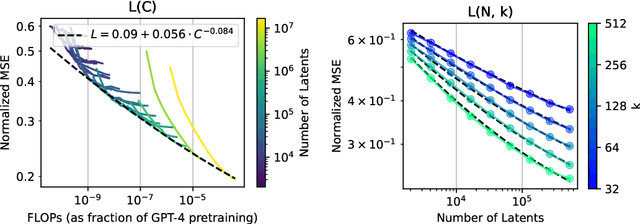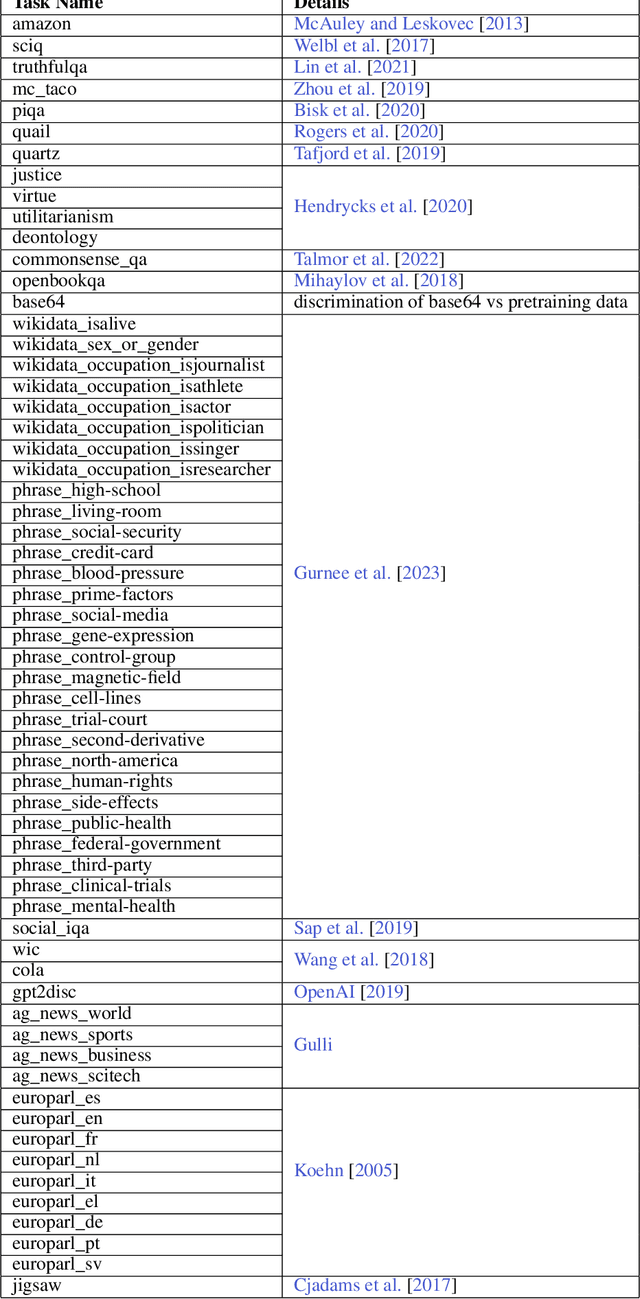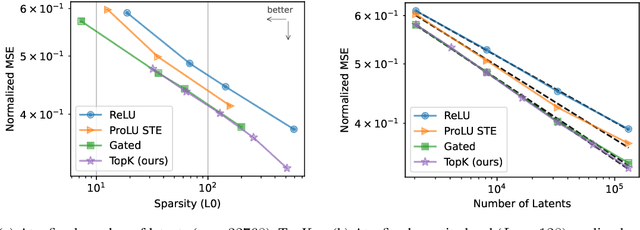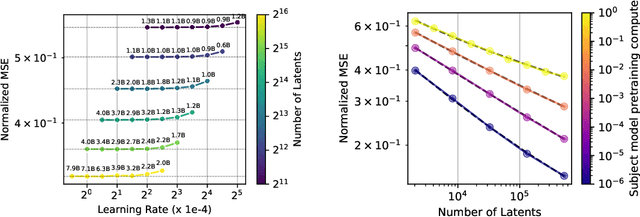Henk Tillman
Scaling and evaluating sparse autoencoders
Jun 06, 2024



Abstract:Sparse autoencoders provide a promising unsupervised approach for extracting interpretable features from a language model by reconstructing activations from a sparse bottleneck layer. Since language models learn many concepts, autoencoders need to be very large to recover all relevant features. However, studying the properties of autoencoder scaling is difficult due to the need to balance reconstruction and sparsity objectives and the presence of dead latents. We propose using k-sparse autoencoders [Makhzani and Frey, 2013] to directly control sparsity, simplifying tuning and improving the reconstruction-sparsity frontier. Additionally, we find modifications that result in few dead latents, even at the largest scales we tried. Using these techniques, we find clean scaling laws with respect to autoencoder size and sparsity. We also introduce several new metrics for evaluating feature quality based on the recovery of hypothesized features, the explainability of activation patterns, and the sparsity of downstream effects. These metrics all generally improve with autoencoder size. To demonstrate the scalability of our approach, we train a 16 million latent autoencoder on GPT-4 activations for 40 billion tokens. We release training code and autoencoders for open-source models, as well as a visualizer.
SegNBDT: Visual Decision Rules for Segmentation
Jun 11, 2020



Abstract:The black-box nature of neural networks limits model decision interpretability, in particular for high-dimensional inputs in computer vision and for dense pixel prediction tasks like segmentation. To address this, prior work combines neural networks with decision trees. However, such models (1) perform poorly when compared to state-of-the-art segmentation models or (2) fail to produce decision rules with spatially-grounded semantic meaning. In this work, we build a hybrid neural-network and decision-tree model for segmentation that (1) attains neural network segmentation accuracy and (2) provides semi-automatically constructed visual decision rules such as "Is there a window?". We obtain semantic visual meaning by extending saliency methods to segmentation and attain accuracy by leveraging insights from neural-backed decision trees, a deep learning analog of decision trees for image classification. Our model SegNBDT attains accuracy within ~2-4% of the state-of-the-art HRNetV2 segmentation model while also retaining explainability; we achieve state-of-the-art performance for explainable models on three benchmark datasets -- Pascal-Context (49.12%), Cityscapes (79.01%), and Look Into Person (51.64%). Furthermore, user studies suggest visual decision rules are more interpretable, particularly for incorrect predictions. Code and pretrained models can be found at https://github.com/daniel-ho/SegNBDT.
 Add to Chrome
Add to Chrome Add to Firefox
Add to Firefox Add to Edge
Add to Edge